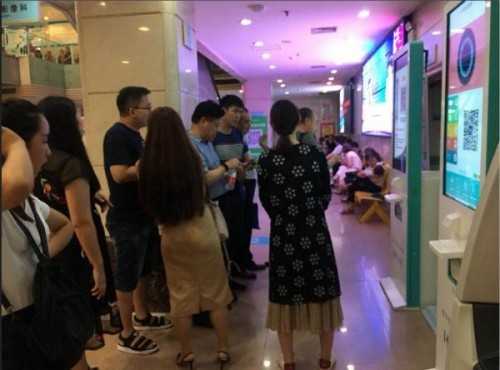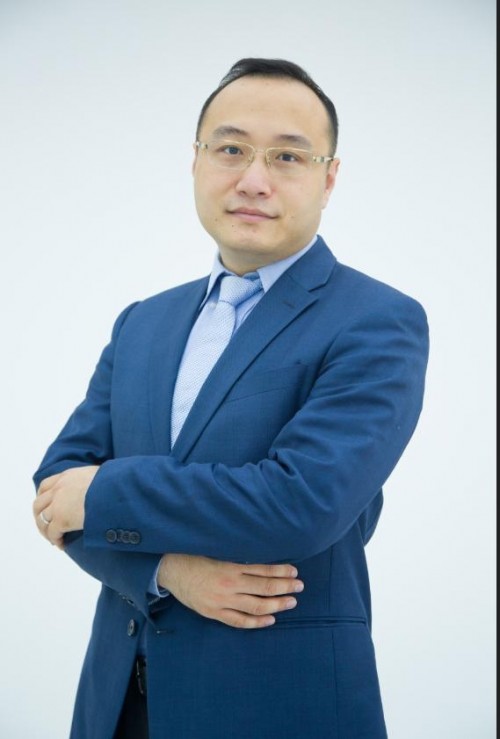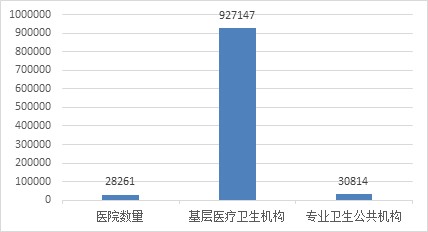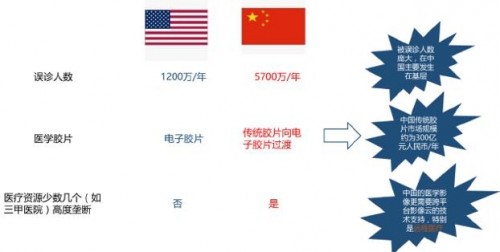In the first year of medical AI landing, Huiyi Huiying broke the ice.
From AlphaGo’s battle with Ke Jie to OpenAI’s bloody abuse of Dota2 semi-professional players, AI once again stepped onto the stage of history. Since 2012, thanks to the increase in data volume and the substantial increase in computing power due to the emergence of deep learning, artificial intelligence has begun to explode.
However, there are reports that IBM’s medical department has laid off a large number of employees, with a scale of 50%-70%; Then there was news from STAT, an American medical media. STAT got a document from Andrew Norden, then the deputy chief health officer of IBM Watson Health. The report showed that doctors who were using Watson for Oncology(Watson strong criticisms, pointing out that Watson often made inaccurate medical advice, which made IBM Watson fall into the biggest crisis of trust in history. Recently, some media surveys have pointed out that many medical imaging AI products are lying in the hospital "eating ash".
Behind the medical AI carnival is the embarrassment that new technologies frequently encounter the application of landing scenes. Is medical AI a conceptual obscenity or just a capital game? If the technical scene can be realized, then what characteristics of products can be truly accepted by hospitals and avoid the fate of "eating ash"?
At present, the development trend of artificial intelligence is unstoppable. From abroad to China, from capital giants to technology giants, the smart medical industry has been actively deployed. Medical imaging AI is highly favored by capital and is considered to be the first to be commercialized, which is expected to achieve overtaking in corners.
At present, many companies have developed products to assist doctors in different departments, which are accelerating the commercial layout. However, after the carnival from 2017 to the first half of 2018, medical AI companies did not seem to hand over a beautiful answer sheet. It is reported that there are as many as 10 medical AI companies cooperating with the Imaging Department of Run Run Run Shaw Hospital in Zhejiang.
Chai Xiangfei, CEO of Huiyi Huiying, believes that AI medical entrepreneurship is still in its infancy as a whole, and there is still much room for improvement in terms of underlying technology, product creativity and product experience. At present, there are several reasons why medical AI products lie in the hospital and "eat ash":
First, everyone has relatively high expectations for medical AI. At present, the speed requirement of AI medical care and the slow change of the medical industry are the biggest contradictions, and the overall research and development cycle is long. Medical care is a traditional industry, which has many characteristics of the original industry. For example, it may take 10 to 15 years for new drugs to be developed and commercialized, and 5 to 10 years for devices to be developed.
Second, at present, most of the products are actually tried in hospitals, and the usability and friendliness remain to be investigated, and at present, AI’s participation in clinical practice is too shallow and too little. AI company should not only design products with doctors as the center, but also integrate products into doctors’ work scenes, and also conform to doctors’ usage habits to help doctors improve diagnosis efficiency and accuracy; In addition, it is necessary to design products with patients as the center, and truly serving patients and improving their medical experience are the end points of product design, and creating easy-to-use and friendly medical AI products is the key to success. Huiyi Huiying cooperates with well-known medical equipment suppliers at home and abroad, such as GE, Philips, Qixi Medical and Medtronic, and develops customized applications for the application of medical equipment such as imaging equipment and high-value consumables, so that artificial intelligence can empower traditional medical care. For example, Huiyi Huiying provides intelligent report interpretation services to patients on the basis of existing business digital films, which has been welcomed by hospitals and patients in many aspects.

AI technology can master different professional knowledge through data training, and many business fields can benefit. The artificial intelligence medical image is to use the method of image recognition to judge the picture. There may be several kinds of data in medicine, mainly image data and pathological data, and many of them can be solved by image recognition.
Lung nodule screening is an area that most AI imaging companies focus on at present. Although AI can help to find out nodules, AI can’t give a conclusion on further benign and malignant judgment and report opinions. Moreover, the products on the market at present are mostly concentrated on pulmonary nodules, and the homogenization is serious. A top-three hospital may install more than 10 AI companies’ products at the same time, but only one or two are often used. Because there is no feedback from doctors to optimize the products of other companies, the product iteration is slow, and there is a situation of lying in the hospital "eating ash".
There are many public data of pulmonary nodules, and many data sets can be downloaded directly, so a large number of companies have developed pulmonary nodule screening products in the past two years. However, for a wider range of diseases, the research and development of AI products is difficult. It is difficult to obtain data of new diseases, and high-quality data needs experts to cooperate and label, so the research and development cycle of the whole disease AI product is long. In addition, it is not enough to identify images in medical scenes alone, and the clinical value of disease screening and auxiliary diagnosis is limited. To become an indispensable tool for doctors’ daily use, they must be involved in clinical decision-making, and doctors need AI products that can cover all medical processes.
Therefore, products that go deep into more diseases and participate in more medical processes may be supported and affirmed by more hospitals and doctors, which may be the most important competitive advantage of AI imaging companies in the future. At this point, Huiyi Huiying found a new way, reached cooperation with Tsinghua University, Peking University, Stanford University and intel, and set up a joint laboratory of artificial intelligence, hoping to cut in with image data, let AI run through the whole process of imaging department, and realize a closed-loop service from screening to diagnosis to treatment and prognosis.
In 2018, Huiyi Huiying released three commonly used mapping products for screening scenes, such as CT lung nodule detection, chest DR detection and fracture detection. Its training model not only has image information, but also adds many patients’ clinical information, test information and follow-up information. Its AI products can not only locate and label lesions, but also participate in tumor staging and classification, and can provide support for doctors’ treatment decisions.
In April 2019, Huiyi Huiying and 301 Hospital released AORTIST3.0, an artificial intelligence platform for aortic dissection, which well combined the development of new disease models with the whole process coverage of single disease. Through verification, the accuracy of AORTIST3.0 far exceeds that of conventional manual measurement, and it also provides the prognosis prediction results of aortic dilatation and composite endpoint events. The performance of AORTIST3.0 can basically reach the level of accurate judgment and prediction like 301 Hospital, which can reduce the five-year recovery of 40% to 15%, and can go deeper into the medical scene and decision-making process.
Chai Xiangfei said that medical AI has entered the second half, and AI has moved from the 1.0 era to the 2.0 era. The reason for this change is. "In the past 1-2 years, we have focused on improving the diagnostic efficiency for doctors. Today, we find that the real core of medical services is patients. It is very important to take patients as the center and open up the service chain from patients to doctors to hospitals."

At present, Huiyi Huiying is committed to building an online image center, connecting patients, hospitals and doctors, providing a digital, mobile and intelligent image closed-loop service system for the three, and trying to build a platform that can continuously incubate innovative medical services and develop in depth, trying to participate in medical treatment and prognosis follow-up links. At the same time, the most troublesome profit dilemma in the industry was broken by Huiyi Huiying’s full-chain service business model. deus ex jumped out of the curse of burning money. It is reported that Huiyi Huiying has a beautiful income report card and has been regarded as a quasi-unicorn and unicorn by the industry.
The medical field in China faces two difficult problems, one is the lack of medical resources, and the other is the unbalanced distribution of medical resources. According to the data of China Health and Family Planning Statistical Yearbook, among all medical institutions in China, there are 28,261 urban hospitals, and the number of primary medical institutions reaches 927,147, which is 32 times that of urban hospitals.
 Statistics on the number of various medical institutions in China in 2016
Statistics on the number of various medical institutions in China in 2016

According to a misdiagnosis data of China Medical Association, the total misdiagnosis rate of clinical medicine in China is 27.8%, among which the average misdiagnosis rate of malignant tumor is 40%, and these misdiagnosis mainly occur in primary medical institutions. The total number of misdiagnosed patients in China exceeds 5,700 every year, which is four times that of the United States.
Guo Na, co-founder and COO of Huiyi Huiying, said: The scarcity and scarcity of high-quality medical resources is a fundamental contradiction. What primary hospitals really lack is diagnostic ability, which is a scarce resource. As an inevitable starting point for graded diagnosis and treatment, artificial intelligence can enable grassroots people to enjoy homogeneous resources and services.
In this regard, Huiyi Huiying has cooperated strategically with China Telecom, China Unicom, Alibaba Cloud, Jiuzhoutong, excellent companies and teams in medical care, IT, cloud computing, big data, artificial intelligence and other dimensions, integrating various resources and its own solid technical foundation, hoping to provide a whole set of services for primary hospitals by taking the medical association as the carrier. Taking the Third Affiliated Hospital of Zhengzhou University as an example, Huiyi Huiying, based on cloud computing, big data and artificial intelligence technology, built a set of intelligent imaging center for the Women and Children’s Union Medical Association, which realized the sharing of medical imaging information and diagnostic information in the medical association, promoted the integration and sharing of medical imaging resources and imaging medical resources, and all women and children’s medical institutions in the medical association could realize the uploading and centralized management of image data, as well as the sharing and reading of image information and diagnostic reports, and finally realized the sinking of high-quality medical resources.
The Third Affiliated Hospital of Zhengzhou University is not a case. It is reported that there are dozens of cases of such medical association imaging center. Guo Na said that in order to further promote the application and popularization of medical AI in primary medical institutions and greatly improve their diagnosis and treatment capabilities, Huiyi Huiying will launch the AI-empowered graded diagnosis and treatment public welfare 100 projects recently, and first provide 100 primary hospitals with free screening services for pulmonary nodules for one year. At present, Huiyi Huiying’s lung nodule screening products can quickly locate and label the lesions, and the automatic recognition accuracy of CT lung nodules exceeds 90%, which helps doctors improve the diagnostic efficiency and reduce the rate of missed diagnosis and misdiagnosis.

Talking about starting from lung nodule screening, Guo Na said that this is based on the current national conditions and future strategic goals. On the one hand, lung cancer can be said to be the first killer of cancer in China. According to the 2013 Annual Report on Cancer Registration in China issued by the National Cancer Registry, there are about 600,000 new cases of lung cancer every year. Lung cancer accounts for 20.48% of all malignant tumors in the city and 27.05% of the mortality. It accounts for 18.05% of the incidence and 22.42% of the mortality of rural malignant tumors, and the incidence and mortality are on the rise. Pulmonary nodule screening can help primary hospitals to provide primary screening services.
On the other hand, the country is vigorously promoting the policy of graded diagnosis and treatment. The medical image cloud platform provided by Huiyi Huiying can provide a good cloud platform support for medical associations and graded diagnosis and treatment, help primary medical institutions and urban hospitals to share data and doctors’ resources, and truly realize "primary examination and superior diagnosis", which can be said to be in response to the call of national graded diagnosis and treatment.
As Chai Xiangfei said, "In the context of insufficient overall medical production capacity, the application of medical artificial intelligence to the grassroots is not only just needed at present, but also the environment is relatively mature. First, using artificial intelligence to help doctors improve the efficiency of diagnosis and liberate doctors from inefficient repetitive work; The second is to help grassroots doctors improve their diagnostic level and reduce the misdiagnosis rate at the grassroots level. Although this road is difficult to walk, we can’t quit because it is difficult. Someone has to do it, and it is valuable to do it. It is worthless not to do it. "
At present, Huiyi Huiying intelligent imaging products have entered more than 1000 hospitals and are widely used in hundreds of medical institutions. It can be said that AI+ primary medical institutions are an excellent pair of "CP", which has achieved a win-win situation for AI medical enterprises, primary medical institutions and primary patients, and has also greatly promoted the development of China’s AI medical industry.
Since the outbreak of COVID-19, Huiyi Huiying has devoted herself to product development, upgrading and implementation. Based on the overall framework of Huiyi Huiying intelligent imaging solution, the algorithm and platform were upgraded for COVID-19 epidemic, and the "Trinity" COVID-19 AI solution was launched, which was helpful for clinical work by effectively combining intelligent auxiliary screening, intelligent remote consultation and digital intelligent film to empower COVID-19 epidemic prevention and control. It has provided scientific and technological assistance to many designated hospitals and shelter hospitals in Beijing, Shanxi, Henan and other places, as well as in the center of Hubei epidemic area. The solution has achieved good feedback in clinical application. The landing application results of Huiyi Huiying COVID-19 AI solution have been reported and affirmed by the top domestic and international media, and also highly praised by the three users in the hospital.
Recently, in the face of the global COVID-19 epidemic, Huiyi Huiying developed and upgraded the artificial intelligence aided diagnosis system in COVID-19 for the rapid COVID-19 epidemic. At present, Huawei has been promoted in Germany, Russia, Thailand, South Africa, Malaysia and other 40+ countries, and has cooperated with 200+ hospitals to provide support for global epidemic prevention and control.